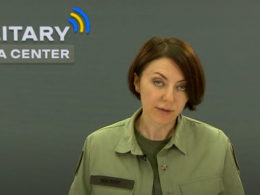On 12 July, the Group of Seven (G7) Coalition and NATO signed agreements to offer Ukraine long-term security commitments during the NATO Summit in Vilnius. NATO Secretary General Jens Stoltenberg announced the agreements – a three-part package, which includes a multi-year program of practical assistance, the creation of a NATO-Ukrainian coordination council, and a commitment to allow Ukraine to join the alliance without going through a Membership Action Plan (MAP). (Main points of G7’s declaration)
The G7 members, including Germany, Japan, France, Canada, Italy, Britain, and the United States, signed a general framework document called the “Joint Declaration of Support for Ukraine.” This document aims to offer Ukraine military, financial, and intelligence support, with each G7 member entering into bilateral security negotiations with Ukraine. Japanese Prime Minister Fumio Kishida stated that other countries would have the opportunity to join the declaration at a later stage.
Notably, the agreements are expected to strengthen long-term Western support for Ukraine and serve as a framework for potential increases in Western security assistance to Ukraine.
Meanwhile, many Russian sources claimed that the summit had been a “failure” for Ukraine because Ukraine did not secure immediate NATO membership. Kremlin spokesperson Dmitry Peskov stated that the G7’s provision of “security guarantees” to Ukraine is “potentially very dangerous” and an encroachment on Russian security interests.
On 12 July, Ukrainian forces continued counteroffensive operations on at least three sectors of the frontline in the Bakhmut, Melitopol (Zaporizhzhia Oblast), and Berdiansk (Donetsk-Zaporizhzhia Oblast border area) directions.
The ISW report highlights that Ukrainian forces reportedly made gains along the Bila Hora-Andriivka and Bila Hora–Kurdyumivka lines (up to 13km southwest of Bakhmut) and along the frontline in the Berdiansk direction. Besides, Russian milbloggers claimed that Ukrainian forces also advanced near Orikhovo-Vasylivka (11km northwest of Bakhmut) southwest of Velyka Novosilka, Donetsk Oblast, and south of Orikhiv in western Zaporizhzhia Oblast.
On 12 July, Russian forces conducted another series of Shahed drone strikes across Ukraine. Ukrainian military sources reported that Russia launched 15 Shahed drones from Kursk Oblast and that Ukrainian air defense forces shot down 11 of the launched drones.
The Russian Ministry of Defense announced that the Wagner Group has almost completely handed weapons and military equipment over to the MoD. This follows the Kremlin’s acknowledgment of Putin’s 29 June meeting with Wagner Group financier Yevgeny Prigozhin, likely part of the Kremlin’s wider narrative effort to portray itself as fully in control and the Wagner rebellion as a settled affair.
Former Russian officer Igor Girkin claimed that certain members of Russian President Vladimir Putin’s inner circle may push Putin to end the war in order to depose him. Girkin has repeatedly accused Prigozhin of being part of the faction arguing in favor of freezing the lines in Ukraine, while Girkin has argued in favor of a grinding, protracted war effort,
Other takeaways from the ISW’s report:
- The Russian information space continues to exhibit a generally muted response to the NATO summit. The muted Russian response belies the reality that the summit demonstrated the degree to which the 2022 Russian invasion has set back the goals for which the Kremlin claims it launched the war.
- Former Russian officer and ardent nationalist Igor Girkin claimed that certain members of Russian President Vladimir Putin’s inner circle may push Putin to end the war in order to depose him.
- Russian Mobilization and Force Generation Efforts (Russian objective: Expand combat power without conducting general mobilization
- Russian occupation authorities are using the promise of medical treatment to coerce residents of occupied territories to receive Russian passports and relocate to Russian territory.
- Russia continues to remove Ukrainian children deeper into occupied areas of Ukraine and deport them to Russia. A prominent Russian milblogger posted a crowd-funding advertisement on 11 July calling for their subscribers to donate to help transport children from Donbas to occupied Crimea.
Read also:
-
Russian Defense Minister downplays Ukraine’s counteroffensive amid NATO Summit – ISW
-
Norway to provide Ukraine with 2 NASAMS launchers and a thousand drones
-
Australia to supply 30 Bushmaster protected mobility vehicles to Ukraine
-
Ukraine and Sweden to cooperate in defense procurement – Ukraine’s Minister of Defense







